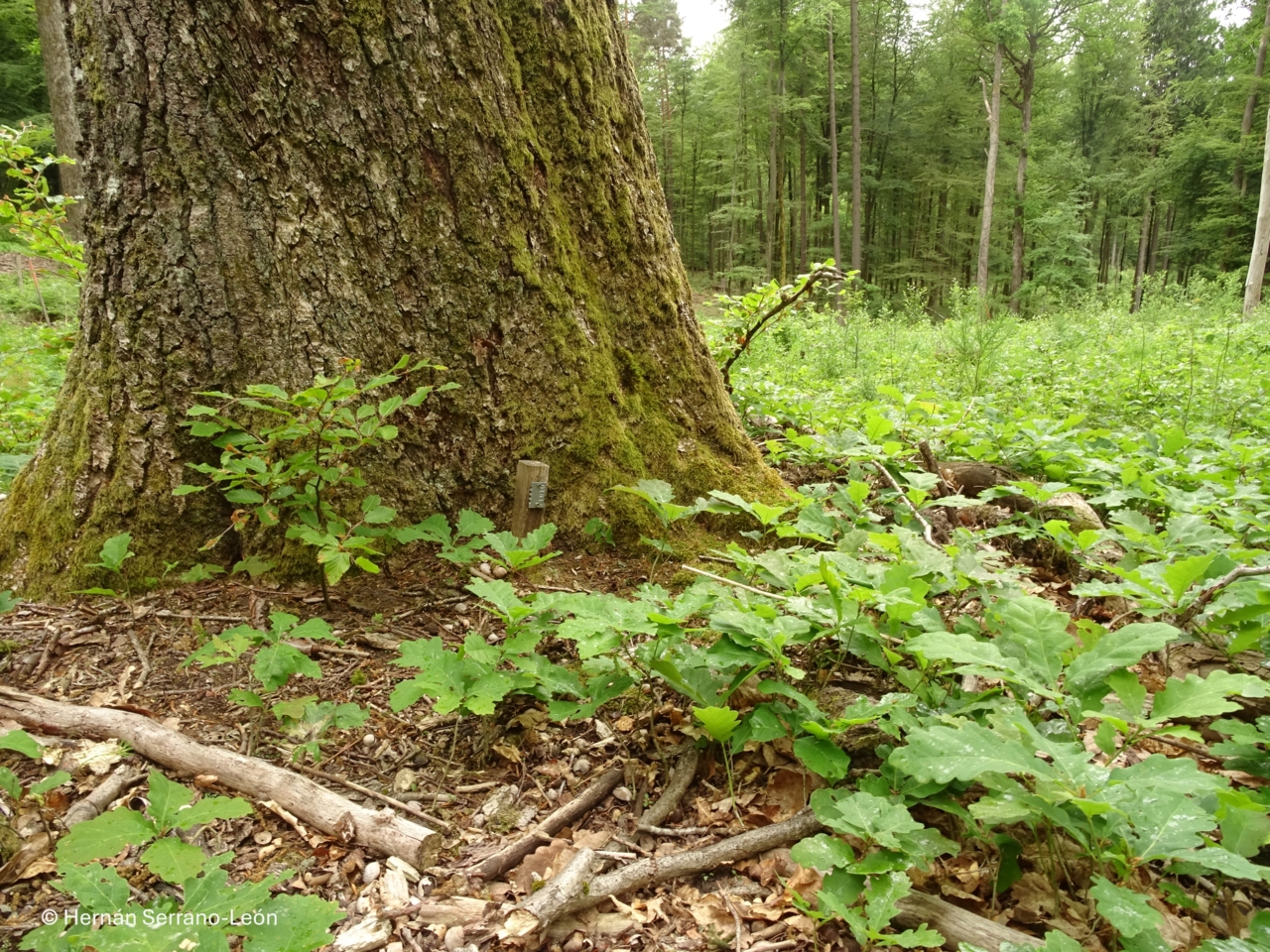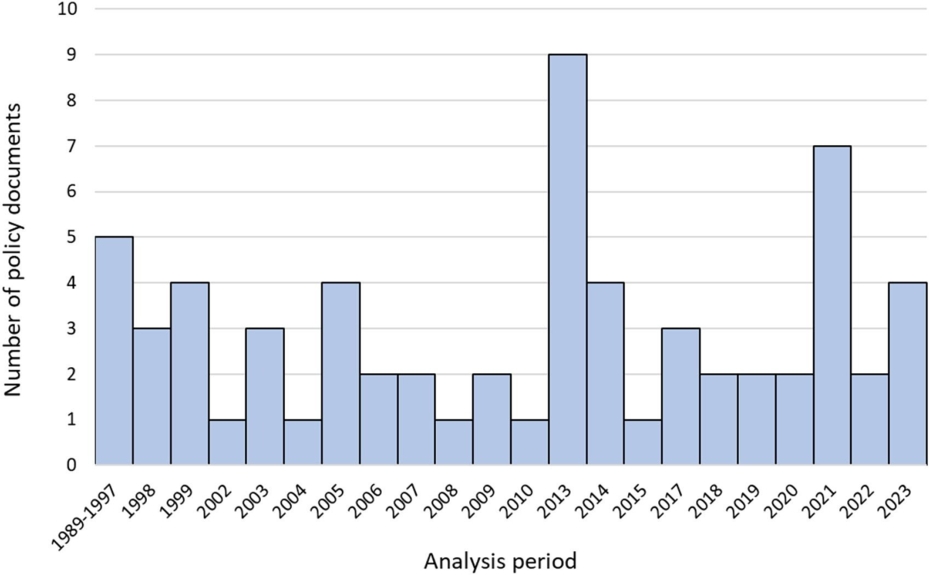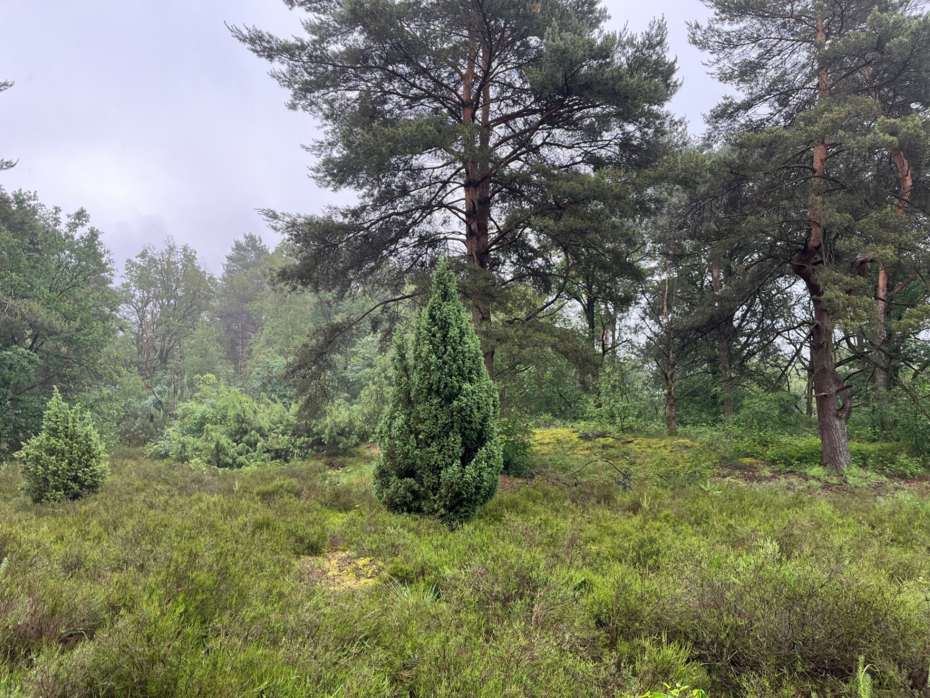Best Practice Knowledge Base
1.1 Natural regeneration

Natural regeneration of oak, Rhineland-Palatinate, Germany © Hernán Serrano-León
Natural regeneration is a cost-effective approach to forest restoration that allows trees to regrow naturally from existing seed sources or root systems. While it may take longer than active planting, natural regeneration often results in forests that are better adapted to local conditions.
Introduction
When enough propagules are available, this method can be more economical than artificial regeneration, as there is no need to purchase plant material. Additionally, it provides local genetic material, which is often well suited to site conditions, leading higher establishment rates. To support these outcomes, key factors to focus on when implementing natural regeneration include ensuring adequate seed availability and dispersal, managing site conditions such as soil quality and light, and controlling grazing pressure from wildlife and livestock.
I. Guidelines
| Nº | Title | Author | Year | Focus Region | Language | Summary |
| 1 | Encouraging and managing natural regeneration | BASC | - | UK | English | Principles and practices for promoting natural regeneration in various landscapes |
| 2 | Reforesting Britain: Why natural regeneration should be our default approach to woodland expansion | Rewilding Britain | 2020 | UK | English | Practical three-step model for approaching natural regeneration, including key aspects to consider and case studies from the UK |
| 3 | Achieving the desired natural regeneration | LWF | 2021 | Germany | English; German | Presents silvicultural techniques for promoting natural regeneration in coniferous and in deciduous forests in Germany |
| 4 | Assisted natural regeneration: harnessing nature for restoration | Shono et al. | 2020 | Tropics and subtropics | English | Principles and practices of assisted natural regeneration, including a few case studies |
| 5 | Restoring forest landscapes through assisted natural regeneration (ANR): a practical manual | FAO | 2019 | World | English | Introduction and manual for assisted natural regeneration, based on experience from tropical countries |
II. Books or book chapters
| Nº | Title | Author | Chapter | Chapter author | Year | Focus region | Language | Summary |
| 1 | The practice of silviculture: Applied forest ecology | Ashton and Kelty | Natural Regeneration: The clearcut method | - | 2017 | World | English | Detailed guidelines for natural regeneration |
| 2 | The practice of silviculture: Applied forest ecology | Ashton and Kelty | Natural Regeneration: The clearcut method | - | 2017 | World | English | Guidelines for natural regeneration based on clearcuts |
| 3 | The practice of silviculture: Applied forest ecology | Ashton and Kelty | Natural Regeneration: The seed-tree method | - | 2017 | World | English | Guidelines for natural regeneration based on seed-tree cuttings |
| 4 | The practice of silviculture: Applied forest ecology | Ashton and Kelty | Natural Regeneration: The shelterwood method | - | 2017 | World | English | Guidelines for natural regeneration based on shelterwood cuttings |
| 5 | The practice of silviculture: Applied forest ecology | Ashton and Kelty | Natural Regeneration: Irregular seed-tree and shelterwood methods | - | 2017 | World | English | Guidelines for natural regeneration based on irregular seed-tree and shelterwod methods |
| 6 | The practice of silviculture: Applied forest ecology | Ashton and Kelty | Natural Regeneration: The coppice method | - | 2017 | World | English | Guidelines for natural regeneration based on coppice |
| 7 | Waldbau auf Ökologischer Grundlage | Bartsch et al. | Verjüngung und Begründung von Waldbeständen: Saat | - | 2020 | Germany | German | Guidelines for natural regeneraton |
| 8 | Ecological Restoration | McDonald et al. | Chapter 7: Using Degree of Natural Regeneration Potential to Guide Selection of Plant Community Restoration Approaches at a Restoration Site | McDonald et al. | 2023 | World | English | Description of different types of natural regeneration in restoration with case studies. |
| 9 | Forest restoration in landscapes | Mansourian et al. | Stimulating natural regeneration | Holz and PLacci | 2005 | World | English | Background and main considerations to promote natural regeneration |
| 10 | Restoring Forests and Trees for Sustainable Development: Policies, Practices, Impacts, and Ways Forward | Katila et al. | Advances in forest restoration management and technology | Stanturf et al. | 2024 | World | English | Compares different regeneration techniques from different practical perspectives, including natural regeneration |
| 11 | Grundriss des Waldbaus | Burschell and Huss | Natürliche Verjüngung | - | 2004 | Europe | German | Comprehensive guide for the use of natural regeneration |
III. Scientific articles
| Nº | Title | Author | Year | Focus region | Language | Type | Summary |
| 1 | When and where to actively restore ecosystems? | Holl and Aide | 2011 | World | English | Conceptual review | Framework for evaluating the need for active restoration and natural regeneration |
| 2 | Landscape Restoration, Natural Regeneration, and the Forests of the Future | Chazdon | 2017 | World | English | Conceptual review | Description of the role of natural regeneration in landscape restoration initiatives |
| 3 | Natural regeneration as a tool for large-scale forest restoration in the tropics: prospects and challenges | Chazdon & Guaraiguata | 2016 | Tropics | English | Narrative review | Description of the potential of natural regeneration for large-scale forest restoration |
| 4 | Response of natural tree regeneration to climate adaptation treatments in Pinus resinosa-dominated forests | Weichmann et al. | 2022 | US | English | Experiment | An experiment to determine how various silvicultural methods emulating climate adaptation strategies affect natural regeneration in Eastern White Pine stands |
| 5 | On the knowns and unknowns of natural regeneration of silviculturally managed sessile oak (Quercus petraea (Matt.) Liebl.) forests—a literature review | Kohler et al. | 2020 | Europe | English | Systematic review | Iidentifies key factors for successful natural regeneration of sessile oak |
| 6 | Natural Regeneration in a Multi-Layered Pinus sylvestris-Picea abies Forest after Target Diameter Harvest and Soil Scarification | Drössler et al. | 2017 | Sweden | English | Experiment | Studies the effect of canopy gaps and soil scarification in coniferous stands on the natural regeneration of desired tree species |
| 7 | Natural regeneration of trees in urban woodlands | Lehvävirta and Rita | 2002 | Finnland | English | Observational study | Assessment of factors affecting natural regeneration in urban woodlands |
| 8 | Survival and growth of tree seedlings in relation to changes in the ground flora during natural regeneration of an oak shelterwood | Harmer et al. | 2005 | UK | English | Observational study | Assessment of the natural regeneration following shelterwood cut in oak stands |
| 9 | Influence management and disturbances on the regeneration of forest stands | Gonçalves and Fonseca | 2023 | World | English | Conceptual review | Provides an overview of the factors affecting natural regeneration in forest stands, emphasizing the role of management |
| 10 | Natural Advance Regeneration of Native Tree Species in Pinus radiata Plantations of South-Central Chile Suggests Potential for a Passive Restoration Approach | Kremer et al. | 2022 | Chile | English | Observational study | Studies the drivers of natural regeneration of native tree species in Pinus radiata monocultures |
| 11 | Restoring native forests from Pinus radiata plantations: natural regeneration of native tree species in response to different harvesting treatments in central Chile | Kremer and Bauhus | 2024 | Chile | English | Experiment | Evaluates the effect of different harvesting treatments of Pinus radiata monocultures on the natural regeneration of natuve tree species |
Related resources
A networked forest park: Exploring online engagement with Queen Elizabeth Forest Park
What can the Internet and social media tell us about the life of a forest park? As part of SUPERB, we have studied online engagement to understand more about the social and cultural contexts of forests and forest restoration efforts across Europe. Learn about how the Internet and social media are involved in different to the site known as Queen Elizabeth Forest Park (QEFP) in Scotland.
From sectoral policy change to cross-sectoral (dis)integration? A longitudinal analysis of the EU’s forest and rural development policy
We analysed the role of the Common Agricultural Policy (CAP) and its rural development fund in financing relevant measures over time. The importance of CAP funding for relevant measures is very limited due to a low provision of financial resources for forest-related measures and a limited uptake of these funds by EU Member States.
The importance of integrated forest management
Forests across Europe are under mounting pressure from climate extremes, pests and rising demand for wood. This article highlights how integrated forest management can help maintain biodiversity and essential ecosystem services under these conditions. By combining multifunctional and segregative strategies, this approach promotes natural regeneration, species diversity and flexible protection measures.




